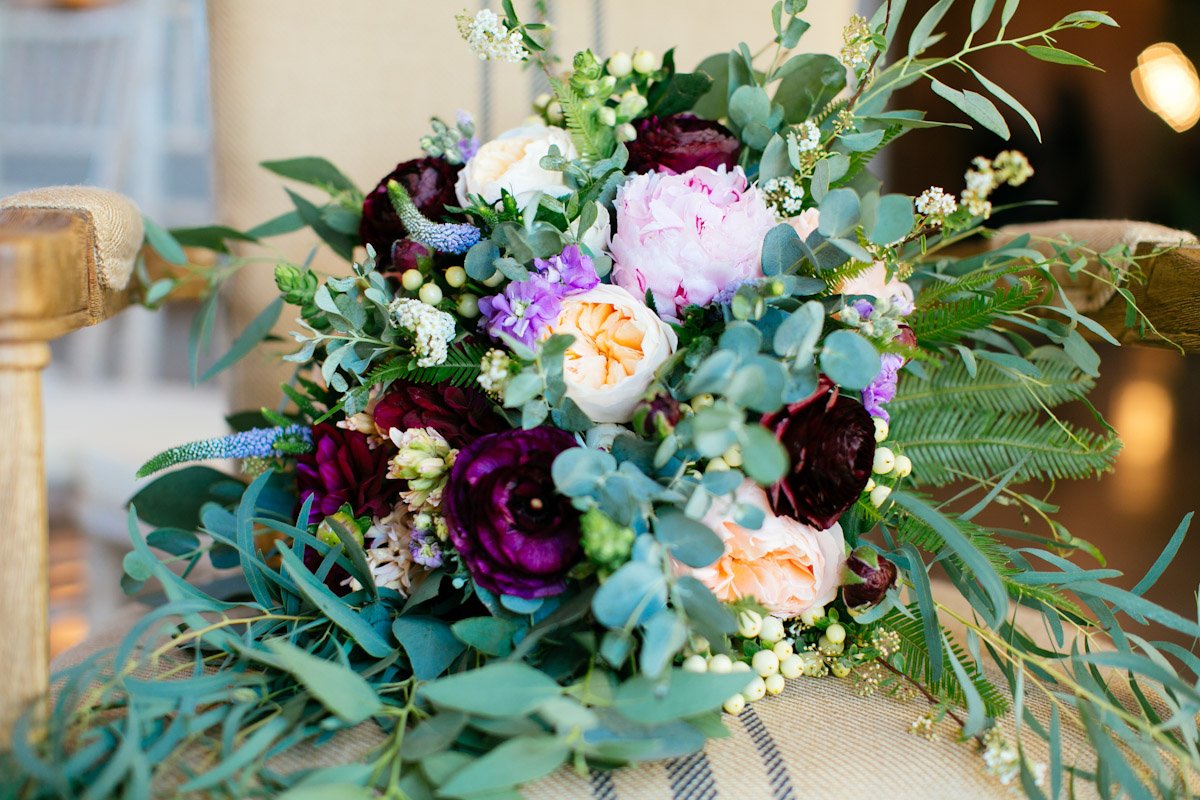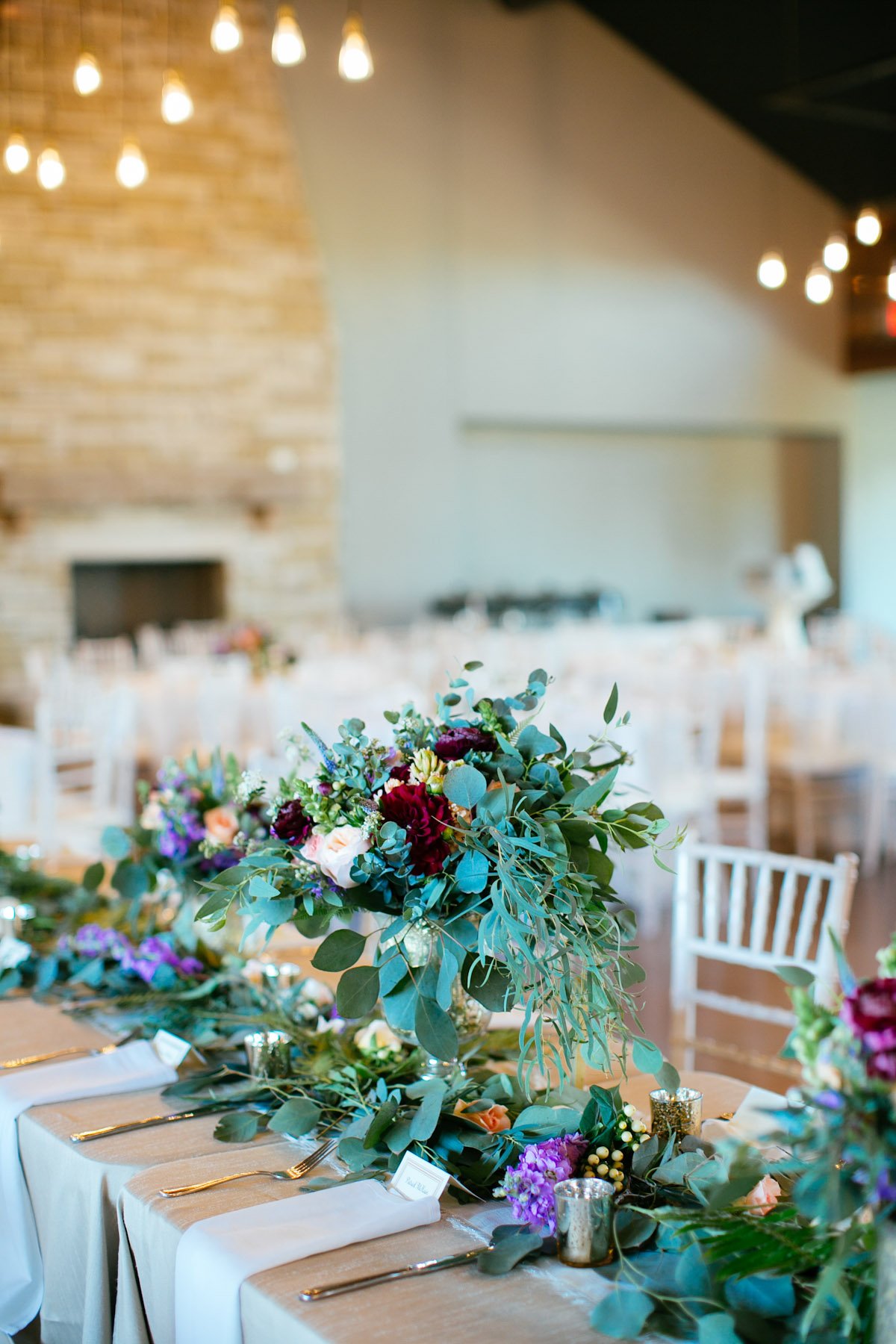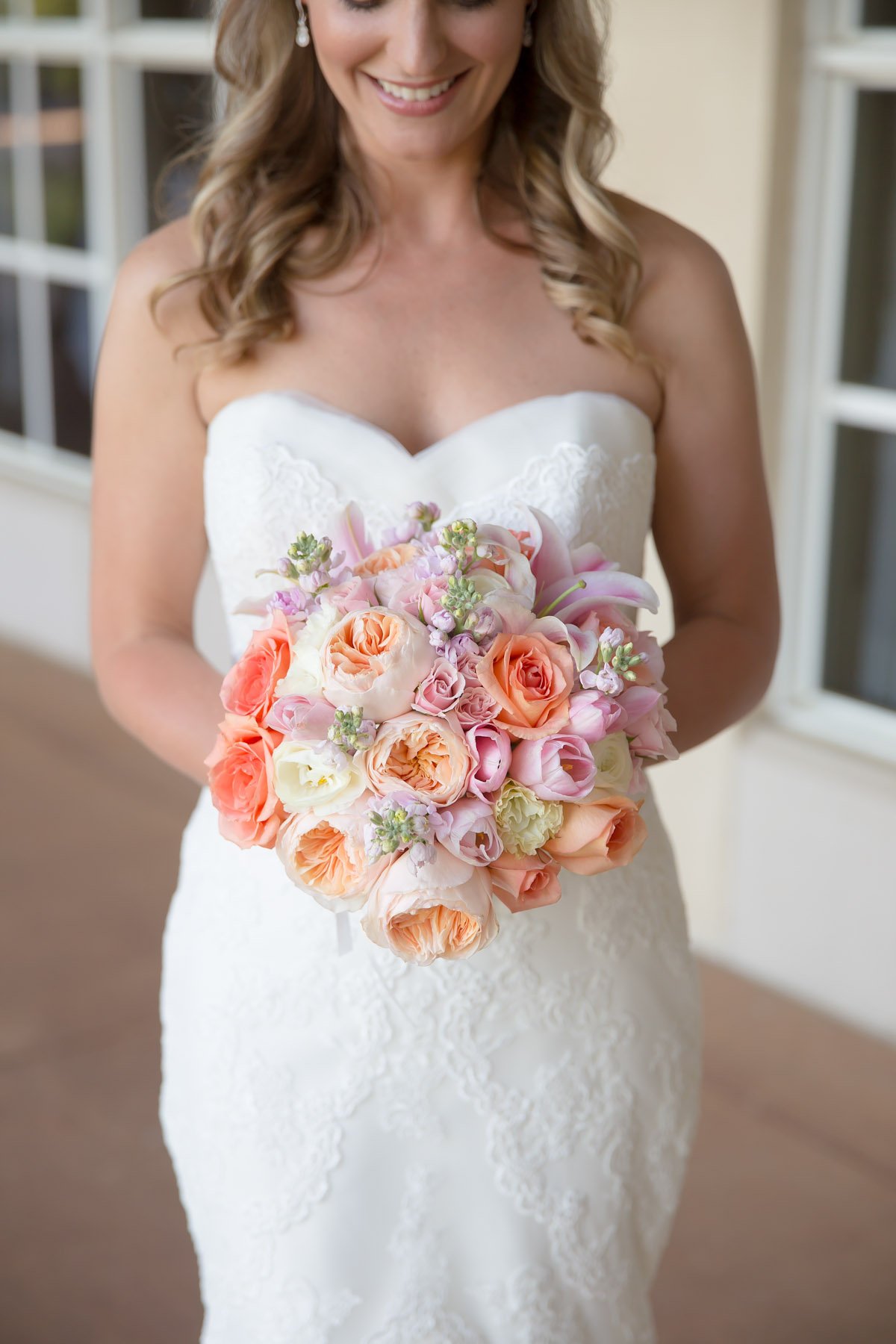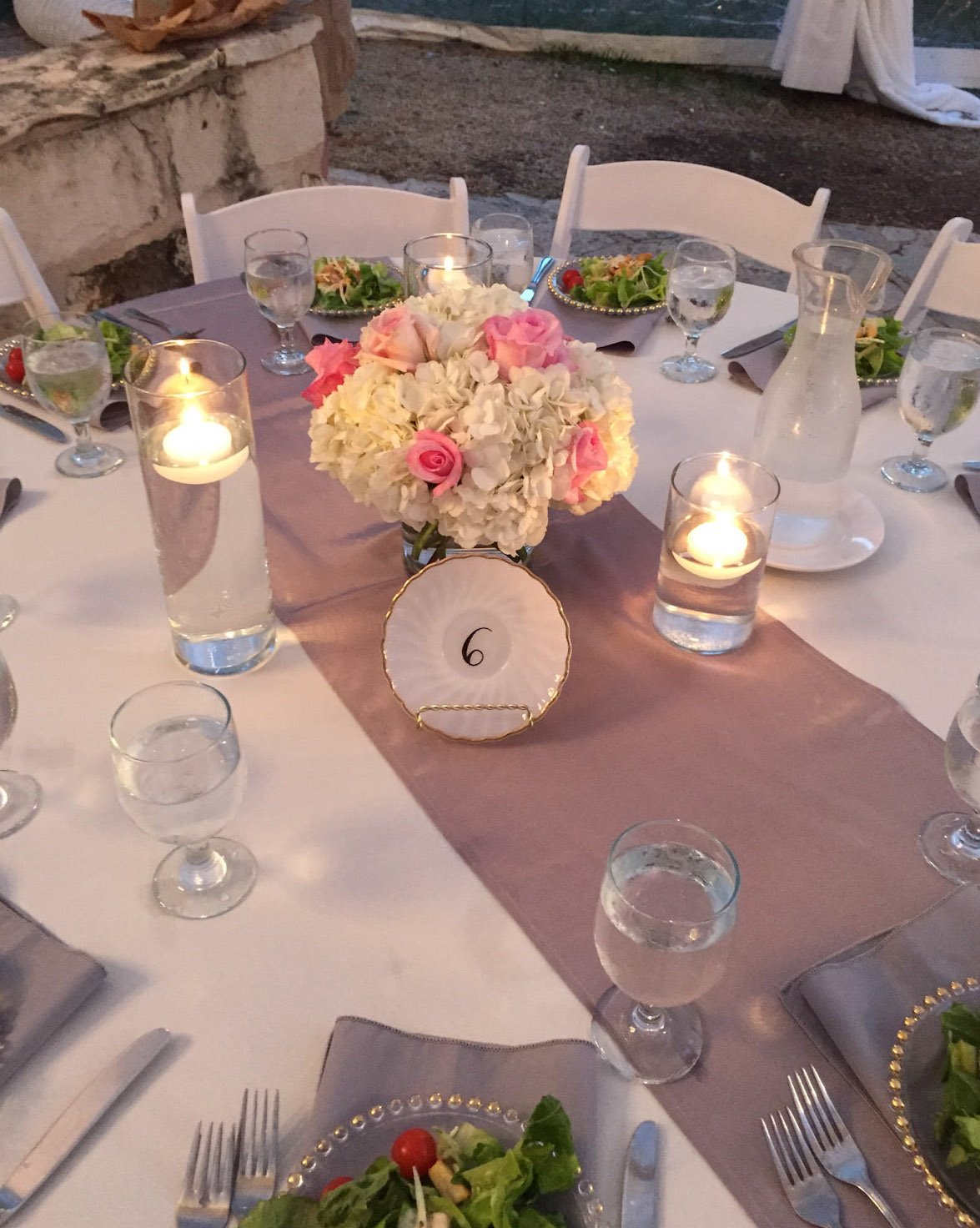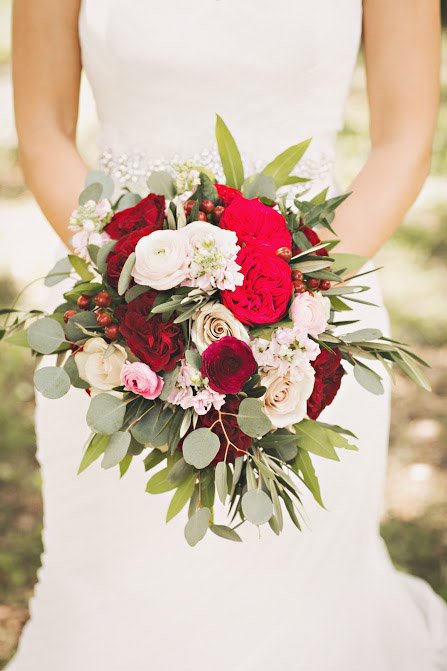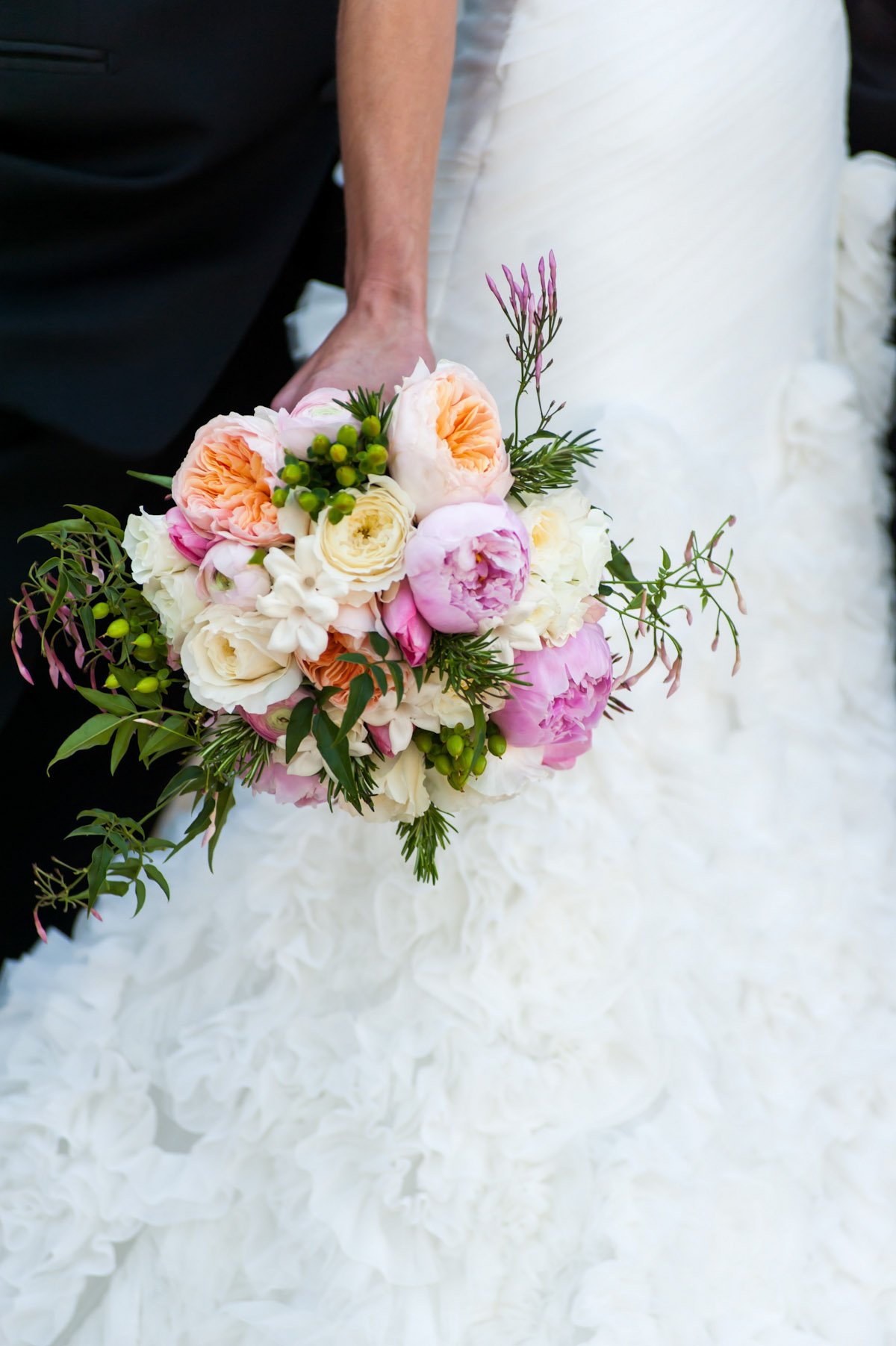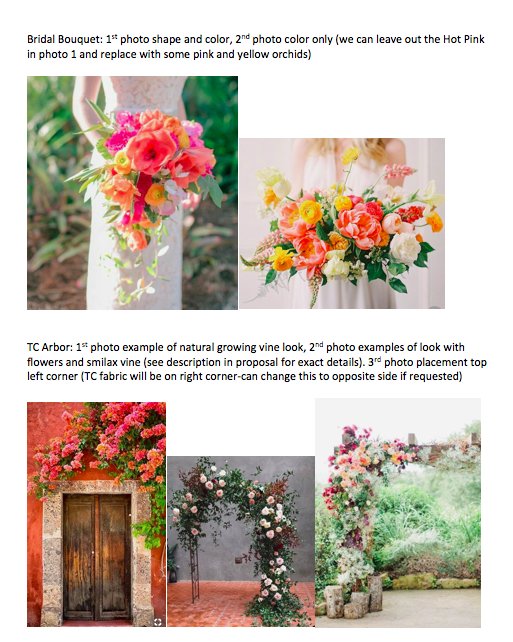Your floral design proposals system can be simple, efficient and offer a personal connection with your client
Floral design proposals have been a part of my life for over 14 years. Today, I’ll share with you the highlights of my system. I want you to have my top tips and hacks. The ones that took me years to learn.
Welcome to the Profitable Floral Design Systems Series Part 3.
Floral design proposals are your sales offer.
They solidify the connection you’ve worked hard to earn up to this point.
This blog post is not going to teach you the basics of a floral design proposal. You already know that. This post is about standardizing your proposal process, reducing your turn around time, and connecting with your client.
In my last post, I shared an email nurture sequence that qualifies and converts new leads. I’m going to build on that today because your clients need to be nurtured throughout the entire sales cycle.
Your floral design proposal is the final step in transforming a warm lead into a paying client.
How, you ask? By narrowing your focus, concentrating on excellent service, and setting yourself apart from your competition through personalization.
Let me explain.
I started meeting with clients and creating floral design proposals back in 2006., but I didn’t have a clue. My brain thought I had to get every single detail written in ink.
I wanted to show my clients that I was a good listener. I thought that capturing every detail conveyed great service. It did not. I was just wasting my time beating every tiny detail to death!
Proposal paperwork was absorbing my time like a giant sponge. As more clients came my way, I realized I couldn’t spend 5 hours creating each proposal or I’d never sleep again!
I was desperate to come up with a floral design proposals system that saved time but didn't sacrifice service.
Loose and organic head table at Canyonwood Ridge in the central Texas hill country
Frankly, my attempt to get the details just right didn’t impress my clients either. They’d often say “We read your proposal and it looks good. We’re so excited to work with you. We can make changes later, right?”
My client’s feedback struck a chord. I realized I could focus on a few key details. I could emphasize my attention to detail in a more focused way and achieve better results. So, I decided to stop obsessing over every tiny detail and turned my focus to nurturing my relationship with each client.
What I’m saying is that although details are important they are not the main objective that early in the planning process. I learned that the initial proposal often changes throughout planning a wedding or event. So, I was spending time elaborating on design elements that were likely to change anyway.
How could I keep what was working and eliminate what wasn’t?
I took back my time by creating a system that worked for me. My team and I standardized the wording for our design styles. We also focused on a few key points that were important to clients which made them feel like they were highly valued.
I’m going to share the tips that make my floral design proposal system efficient and customer-centric. Please remember these are suggestions. So, you can tweak, build on, or play with these concepts until you find what works best for you and your team.
Let’s dive in.
Clients are interested in hiring someone they feel a connection with. Now, more than ever, personalization matters.
I have learned that it’s less about the software program you use, and more about solidifying a connection with your client by showing them that you both understand and share their vision.
My point is that you need to differentiate yourself at every point along the clients' journey.
A lot of floral design software proposal systems spit out a presentation that looks like it’s competitors. So, make sure you are providing a floral design proposal that shares your values and dedication to a personal experience. I know there are a lot of proposal software options out there. I created my most recent floral design proposal using excel and word. So, just know it doesn’t have to cost a lot of money to be effective.
A good floral design proposals system starts in the consultation meeting. So, I want to touch on some pointers here before we move into my proposal writing tips.
By the way, if you’d like more detail on how to handle a floral design consultation meeting, check out my blog post on that topic here.
You can start by focusing on one client at a time.
I know you are constantly being pulled in different directions, so it's important to schedule consultations when you know you'll have the bandwidth for an in-depth conversation. If you offer online scheduling options be sure to block out busy production and wedding days so you don't have to fit in a consultation meeting when you should be focused on your current client’s designs. Do your best to schedule consultation meetings earlier in the week when you’ll be able to give each client your full attention.
Then, be prepared to offer ideas that make your floral design proposal stand out from the competition.
Your new client has taken the time to fill out a detailed questionnaire and share inspiration images with you before the meeting. So, in return, it’s very important to review that information before you meet with them. Take some time before the meeting to look at their photos, think about opportunities at the venue, and review their flower wish list.
If you go into the meeting with a good idea of what they are looking for and a feel for their style based on their inspiration images, they will recognize that you’ve taken the time to understand their needs. That goes a long way towards building the trust your client needs to choose you as their florist.
I know for a fact that clients recognize when the floral designer they are meeting with is distracted or disinterested. How do I know this? Well, it's frankly because I've booked a lot of clients who told me exactly that about my competitors.
So, be sure to focus intently on the client in your meeting so you can maximize your time and the opportunity for a sale!
Finally, Manage your clients’ expectations about the floral design proposal delivery time.
Be sure to wrap up your consultation meeting with a review of the next steps and a clear idea of when you will send the proposal to your client. Ideally, you'll get the proposal over to them within 2-3 days. So, under promise and over deliver by telling them you'll have it to them within a week. You’ll be able to get the proposal completed faster because the details are fresh in your mind and they’ll be pleasantly surprised when the proposal arrives early.
Here’s a fantastic tip about how to get your proposal to your client within 2 -3 days.
When you book the client's appointment, you also book an hour in your calendar the following day (or the day after that) to write the proposal. That's it. It’s scheduled into your life and you do it. There’s no reason to push it off. If you need it to be early in the morning, first thing when you get to work, or later in the evening after your family is asleep that’s okay too. By booking the time in your calendar to handle the consultation along with writing and sending the proposal you have completed the circle.
Try this out if you tend to procrastinate on floral design proposals and let me know how it increases your booking rate!
There are some cases where you don’t have a consultation meeting. That’s okay too.
I've booked lots of weddings and events based on email communication with a wedding planner, bride, or corporate event liaison. The best thing to do in those situations is to get as much of the same information as you would in the consultation via email and run with it in the same way you would any other floral design proposal.
So, you’ve got all the information you need and you are ready to write out your floral design proposal.
Efficiency is what we are going for here, right people?
Time is valuable.
Floral Design proposal writing is about communicating the right balance of detail, personalization, and service as quickly as possible.
The first section of your proposal should be filled out before the meeting. Fill out all the information on Monday for all your consultations in the coming week. Type it directly into your software of choice to eliminate the pencil and paper step. This means 1/5th of the work is already done. Also, if you have an assistant or employee, this is a perfect task to delegate to them.
Let’s dig into the body of the proposal.
The first section of every floral design proposal includes all the client and venue information.
My best tip here is one that I don’t think many floral design proposals include, but should.
Have you ever had a hard-to-reach client? I've had a handful over the years, but there was one who was missing in action. I emailed her. My team called her repeatedly. I texted her and no reply.
We had a meeting to finalize her wedding order and she had, luckily for me, decided to increase her budget to include the ceremony florals of her dreams. I needed to order the flowers, but I wanted her to approve the changes first. It doubled her budget so I felt that was important.
Finally, I called her catering company. They couldn’t reach her either. We were seriously starting to worry about her.
After a few more texts, she replied. It was a relief and everything on her end was fine. She was overwhelmed with work and wedding planning and needed a moment. So, after that wedding, I decided that every wedding client's proposal requires an alternate contact person's name, phone number, and email address.
This is very helpful to have in case of an emergency. It could be a relative or close friend. Ask for their name, phone number, and email. I learned the hard way that a backup contact person, although not used very often, can be a lifesaver in case of emergency.
The next section is the Overall Look and Style of the Event.
Proposals need to be customized for each client. It can be difficult to find the right balance between being too vague and too detailed in your descriptions. This section is the opportunity for you to wow the client with your shared vision for the event. Keeping in mind this can easily change in the future, use this as your opportunity to let the client know you’ve been listening to their ideas and share their vision.
floral design proposal with dome shaped centerpiece
I’ve found that most clients are happy with an overall style section of the proposal describing a few of the flower varieties, the color palette and the general style of the décor.
For example, here’s an overall style section from a real wedding in 2019.
Overall Look: A spring wedding with a lush garden style design. Composed of a mix of seasonal flowers in shades of corals, watermelons, peaches, sandy beige, butter yellows, and greens. Flowers to possibly include ranunculus, orchids, roses, peonies, and olive greenery. Kelsey’s favorite flowers are peonies and orchids! See images on Pinterest board for visual inspiration.
There’s enough information here for the client to feel confident that you understand their vision and color palette, but it’s not so much that you’ll spend hours fine-tuning the wording or details. Also, I incorporated the client's name in this section. It's a simple way to emphasize that you are focused on her.
The itemized sections of the proposal come next.
These sections will have your descriptions for bouquets, boutonnieres, and other personal flowers, along with all the floral elements of the ceremony and reception.
The key here is to keep it cohesive. Try to reserve longer descriptions to highlight a few elements that your client showed the most interest in during your consultation.
Typically, the bridal bouquet, ceremony backdrop, and reception installation or focal centerpieces are where you will concentrate your time on the proposal.
Everything else can be filled in with just enough detail to be effectively communicated.
For example, the bridal bouquet is usually a highlight of the floral design proposal. It’s often the first element I describe in detail on the proposal. If you describe it well all the other personal flowers can simply follow suit.
This bouquet description is from the same wedding in 2019. (Name changed for privacy)
Kelsey’s bouquet: A lush, garden-style bouquet, in a medium size. In shades of corals, watermelons, sandy beige, butter yellows, and greens. To possibly include a few peonies, ranunculus, roses, tulips, and other seasonal flowers. Olive greenery and some accents of smilax for texture and a trailing effect, hand-tied with coordinating coral satin ribbon.
This description clearly defines the bouquet. The element that she cares about most. Plus, I used her first name instead of the word bridal or bride's before bouquet. This small detail is an example of how you can continue to nurture the client using your proposal as a marketing tool.
Then, since you've established just enough detail at the begining, all the other personal flowers can follow suit with the shortest description possible.
Bridesmaids: Smaller bouquets to coordinate, tied with coordinating satin ribbon.
Boutonnieres: Small clusters to coordinate, tied with satin ribbon.
...and, so on.
Keep it short and simple. Then, later if more detail needs to be added you can elaborate further.
garden style bouquet
My system developed around using standardized wording for sizes and styles.
That way when it comes time for you to write a proposal you don’t have to labor over every descriptive choice. You can simply choose from your standardized wording and embellish a little here and there.
For example, every bridal bouquet I sold at my flower shop had a description that started from one of these standardized options.
Loose and organic style with lots of texture… this was for wild bouquets with lots of greenery and dimension in the depth of the flowers.
Rounded and compact in a dome shape… this was for dome-shaped bouquets usually composed of all blooms with little to no greenery.
Lush garden style with some texture… this was for lush bouquets with shorter greenery accents.
Although there are many variations and endless opportunities in design, most of us have a signature style and our clients come to us because of that style.
Describing it upfront and having just a few variations on the theme can be a huge time saver. I've included some example images throughout this post that convey the 3 main styles I focused on for my clients. The captions below each image will coordinate with the descriptions above.
By simply creating standardized descriptions you can significantly speed up the time it takes to create your floral design proposals.
This also helps your team when production time rolls around. It’s important to have clear descriptions of what your designs need to look like for your designers to implement.
For example, centerpieces can be treated the same way in the proposal. You can use the same language to carry out a cohesive story through the proposal.
Rounded and compact dome-shaped arrangements to coordinate with the bouquets.
Elevated arrangements in a lush garden style with some texture from various types of greenery on gold stands.
Loose and organic style garlands with lots of texture down the length of the head table.
These standardized word choices can carry through the entire proposal. Simplify your process and create a theme throughout the proposal. This elevates your descriptions above those of your competition.
Once you get this system of standardized wording down, it will shave off a significant amount of time!
As you’ve seen in my bridal bouquet example above, opportunities for personalization are important too.
The selling point is how well you know your client.
You've taken the time to listen closely to their vision and collaborate with them on ideas. So, be sure you highlight those items in your proposal. Trust me, they'll notice.
For my example, I’ll use the same real wedding circa 2019.
Mother’s Flowers: A small clutch bouquet for Mother of the Bride, composed of pink or yellow mini callas as the focal flower with other accent flowers and a hint of greenery, hand-tied with coordinating ribbon.
(Note: the mini callas are special for Mother of the Bride)
Did you catch my note at the end? The detail is already listed in the bouquet. The description includes pink or yellow mini callas with other accent flowers. So, why would I add that little note at the end? Well, it’s because I want to highlight the importance of the mini callas. My client communicated that they are special to the mother of the bride. So, I want her to see that means they are also special to me.
You can sprinkle in just the right amount of detail in a few key places on each proposal. You can pick 3 strategic key points to focus on and then speed through the rest by using the phrase 'to coordinate' everywhere else.
This is how you books clients and save tons of time.
So, don’t be shy when you can point out something unique or special, but be sure not to overuse this tactic either.
I’d say only use it once per section of the event (personals, ceremony, reception). If you get through a proposal and nothing stands out to you that’s ok too. It’s not a requirement by any means. The more you look for these special opportunities the more they will stand out to you so just keep listening to your clients and find them when you can!
Next up. Do you have a possibilites section in your floral design proposal?
The possibilities section of the floral design proposal is optional, but useful when you want to sell your clients on a concept.
Once you’ve described all the elements of their personal flowers, ceremony, and reception this section is where you add the nice-to-haves that don’t quite fit into their ideal budget.
This is another opportunity for you to show that you’ve been listening intently and are happy to create all the elements of their dream wedding, but simultaneously show concern for staying within or at least close to their ideal budget.
I’ve seen this section called Optional Enhancements, Add-ons, Additional Details, and my favorite Possibilities.
These sweet garden style centerpieces 'coordinated with' the bouquet above. Your word choice can simplify your floral design proposals!
This is a great way to share your creative concepts early on. Then, use it to upsell the client later in the planning process.
Let's say your clients mention that they'd love to see some beautiful floral clusters on the backs of their reception chairs, but aren't sure it's necessary. This is the 'dream big' section. Did your client show interest in a hanging installation? Here is where you price it in as a possibility!
This is also the place to add a high-end alternative to an item listed earlier in the floral design proposal.
Let me give you an example.
I had a bride who wanted all gardenias for her bouquet, but she knew they were expensive. So, in the main body of the proposal, I listed a mixed bouquet of roses, hydrangeas, and gardenias. Then, in the possibilities section, I listed the bouquet of all gardenias. The itemized price was listed, but not included in the total. This puts the possibility in your client's mind and who knows, they might just splurge on it!
The visual section is essential to efficient floral design proposals.
I love inspirational images. They are essential to making sure you and your client are on the same page. They also aid in shortening written descriptions. You can use the words ‘see image’ to describe an elaborate installation in two words!
In the next section, share a group of images that inspire your combined vision and highlight your previous work. It’s lovely to incorporate your client’s inspiration photos in the mood board, but it’s important to show some of your work here if possible too.
This is an example from the same 2019 wedding.
The visual section of your floral design proposal should speak volumes!
The color palette and overall design style are two main points you want to concentrate on with your initial floral design proposals.
Keep the cohesive theme going. Highlight the same elements visually that you highlighted in the written descriptions. So, for example, in this spring 2019 wedding, Initally, I focused on the bridal bouquet images at the top left and the ceremony arbor design. The rest of the images are for color and overall design style.
Please note that this copy of the visual proposal is from the final planning meeting for this wedding. So, keep in mind this much detail is not necessary in the inital proposal.
More detail can be added to the visual section of your proposal after your client books your services.
Your rental items need to be included in your proposal.
I like to list all the rental items separately to keep that organized in my business, but it’s totally up to you how you’d like to handle that. I will say that it’s very easy to overlook details like vase and candle rentals when they are not itemized. It’s also easy to forget to charge for them. So, I recommend itemizing all those rental items. It also helps to clarify for the client what they can and cannot take home with them at the end of the event.
Tie it up in a bow with the delivery, set-up, and tear-down section.
I highly recommend itemizing your delivery, set-up, and tear-down fees. This helps clearly define what the client is paying for and helps you determine what you should be charging for these services. It also discourages the client from asking for multiple dropoff points.
My strategy here for years was a percentage-based fee and it worked for me. However, I know many other florists that base their fees off hourly rates with a 3x markup.
You can decide which option works best for your business, but please remember to charge for your labor.
A formal contract is essential.
Of course, I’d be neglectful if I didn’t mention that your contract needs to accompany this proposal when you send it to your client.
Your contract needs to spell out your terms and conditions.
Be sure to require a signature along with a deposit to book the date. I recommend you have an attorney look over your contract to make sure you are fully covered with clauses that include COVID-19, force majeure, weather, and/or any other reasons for cancellation or postponement.
This is an opportunity for you to state your offer (the proposal) and place an expiration date on it.
The offer is usually good for 1-2 weeks and will motivate your client to decide to book your services. If the offer is going to expire and you haven't received a reply from your client, a follow-up email is in order.
My system for follow-ups is generous.
I send an email 1 week after the proposal, then I send another 2 weeks after. If I don't hear from them I send a final email 1 week later. Usually, after the 2nd email, the client will reply with a yes or no so you can both move forward.
Always, always get a signed contract and deposit before moving forward with a client past this stage.
There you have it.
My system is simple.
It is centered around the customer. That's because it focuses on the client's journey. Keep that core value at the forefront of everything you do and your clients will respond positvely.
The goal with your proposal is to reach the know, like and trust level necessary to book your services. It’s easy and efficient when you implement the tips I’ve shared today.
The ultimate goal is to have happy clients. This beautiful bride said her vendors were her "Dream Team"...it doesn't get better than that.
Let’s recap.
Use the consultation meeting to focus on the client and find those key points they are most excited about for their wedding flowers.
Book time in your schedule for both the consultation appointment and the time it takes (no more than 1-2 hours) to create the proposal.
Manage your clients’ expectations by delivering your floral design proposals earlier than your clients expect them.
Write out all the information from your client’s questionnaire into the proposal before your meeting.
Write everything directly into the floral design proposal software of your choice to eliminate time spent transferring from paper and pen.
Use standardized wording and descriptions on every proposal to make your writing time-efficient.
Focus on a few of the client's most important elements and highlight those with longer descriptions. Keep all other descriptions short, sweet, and to the point.
Use the client’s name in a few strategic places to give the proposal a personal touch.
Incorporate a visual inspiration page that highlights the vision and your work if possible.
Include your rental items for clarity with the client and internal organization.
Always send a contract along with your proposal. Give it an expiration date.
Follow up with the client before the contract expires.
Wedding clients want to feel a connection to you.
So, it’s key to have a system that allows you to incorporate personal touchpoints into your floral design proposals.
Creating a system of standardized wording will aid you in delivering the floral design proposal promptly.
When you focus on what is important to your client, it shines through. Please take the elements above you find useful and incorporate them into your floral design proposals system.
Let me know how it goes!
Until then,
LuAnn

